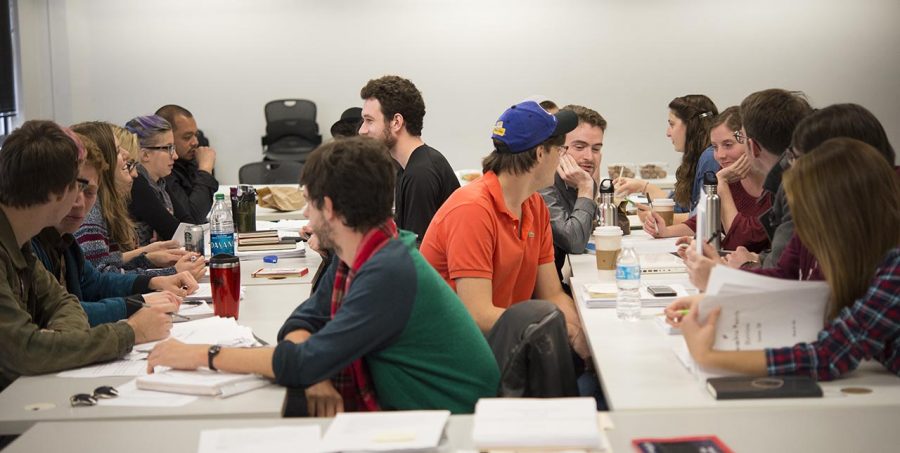Students learn by editing Columbia Poetry Review
November 3, 2014
After reaching its Nov. 1 deadline for submission to its 28th issue, The Columbia Poetry Review, a student-edited literary journal, is now one step closer to publication.
Every fall, the “Literary Magazine Editing” class in the Creative Writing Department begins compiling and editing entries for the magazine’s spring release. Each issue comprises approximately 125 pages and includes an average of 75–100 poems, according to David Trinidad, a professor in the Creative Writing Department and faculty advisor for CPR. The review also includes a guest artist on the cover of each issue, an online blog by students that includes interviews with poets and reviews of local readings.
Trinidad said the journal contains work from well-known poets that students solicit as well as student work and unsolicited work from the public.
A panel of students reviews the submissions in batches of approximately 50 poems and discuss which will be accepted, Trinidad said. Students vote, and if the piece attracts a majority vote, it goes into the issue.
Staffer Cora Jacobs, managing editor of CPR, oversees the production and editing process. She also oversees content on the CPR blog and notifies contributers whether they will be published.
Jacobs said poets can submit work online through a program called Submittable for a $3 fee, but students are encouraged to participate and can submit poems for free as part of a student discount.
“[Students] can participate at any time,” Jacobs said. “We offer a CPR submission box down in the English Department. We send out flyers to all the students, and you don’t necessarily have to be a poetry major.”
Jacobs said she organizes distribution, which she said is one of the most important aspects of CPR. Approximately 1,200 copies of the journal are distributed each year throughout the U.S. and Canada through Barnes & Noble, Books-A-Million and the CPR website. International writers can also purchase the journal online.
“You stay inside the college if you’re not nationally distributed,” Jacobs said. “It’s more important that your name and your work get published in CPR because [it] goes out across the country, throughout Canada and it’s on our website.”
The journal is in its 28th year of publishing and is a viable publications that has featured many famous authors, including Sarah Carson, Nate Pritts and Diane Seuss, Jacobs said.
“The best thing about a student being published in CPR is that they get published next to some famous people,” Jacobs said. “That in itself is a really cool thing.”
Raul Alvarez attended Columbia as a graduate student from 2010–2012 and currently works as a writer and editor for College Greenlight, an organization that helps connect students to appropriate colleges, scholarships and mentors while also participating in local literary events. He said the program was a good experience for him because it gave him real industry skills prior to graduation he otherwise would not have found.
During his time at Columbia, Alvarez said he worked at the CPR on the editorial board and as an editor of the journal. He has also been featured in the journal twice, once as a student and then again after graduation. He said working at the review and gaining editorial experience helped him get a job as a professional editor after graduating.
“The experience of having to go through a work of submissions and pick out things based on the aesthetic of what that medium was going to be that year was very enlightening and an experience that really taught me a lot about not only the literary world but working in coordination with other writers and developing an editorial aesthetic,” Alvarez said.








